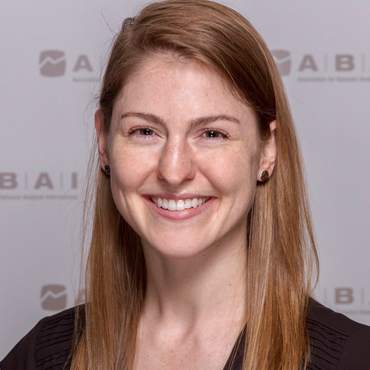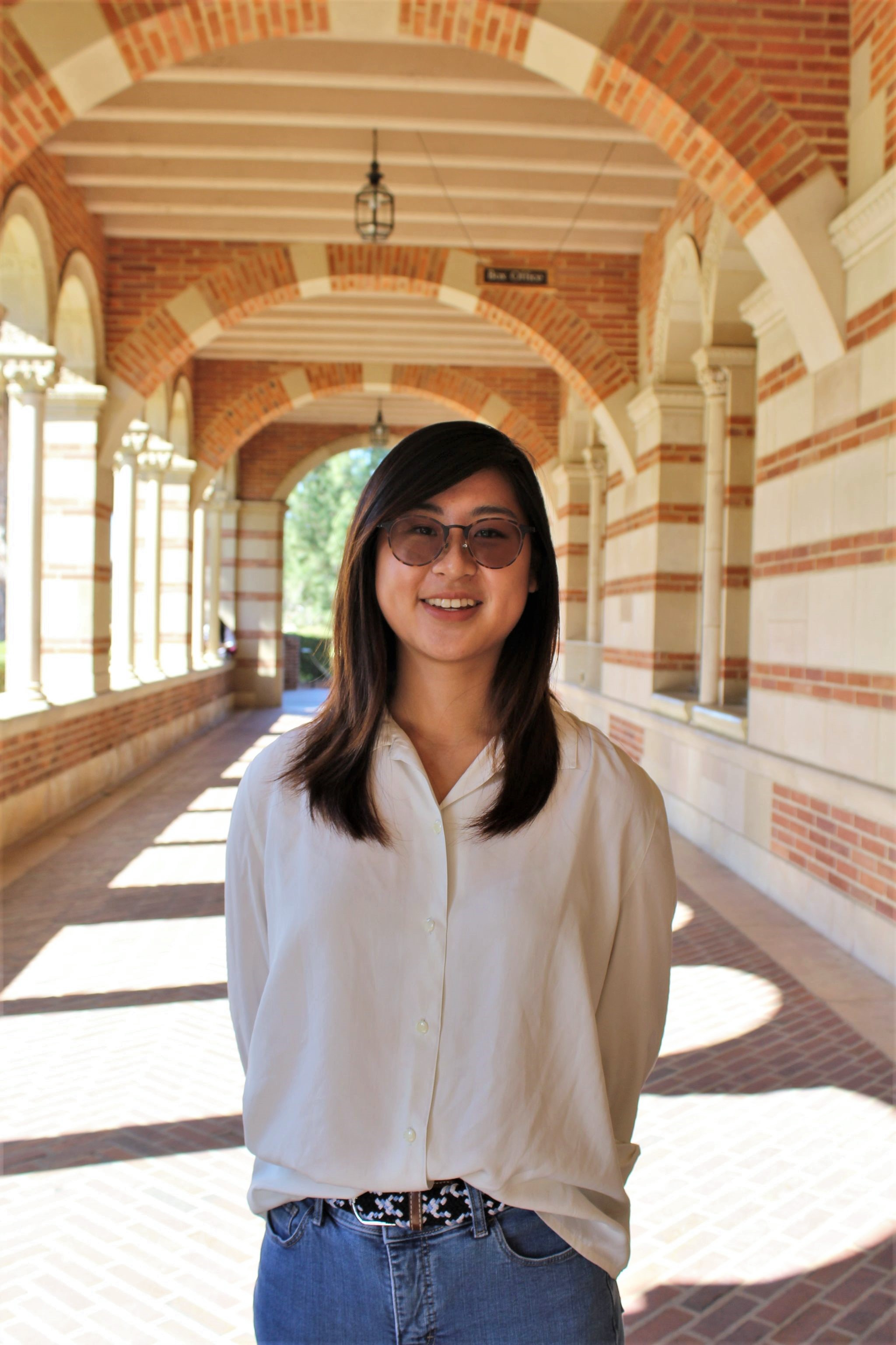April is National Internship Awareness Month, and we want to take this opportunity to highlight the Virtual Student Federal Service (VSFS) internship program that IES has been involved in this year and thank our wonderful interns for their contributions to the National Center for Education Research (NCER) and National Center for Special Education Research (NCSER).
The two IES Centers hired four interns to work on communication and two interns to work on data science. We asked each of them to tell us a little about themselves, their future plans, and what interested them or surprised them about the internship with IES. Here’s what they said.
Alice Bravo is pursuing a PhD in special education in the College of Education at the University of Washington.

My research interests keep evolving but are rooted in early intervention for young children with autism spectrum disorder (ASD) using applied behavior analysis and developmental science. Specifically, I am interested in the teaching of imitation and communication skills. In 5 years, I hope to be working as an applied researcher and practitioner, conducting research related to early intervention and ASD while providing training and coaching to caregivers and early intervention/early childhood special education professionals. During my internship with IES, I was really interested in and excited by the breadth of research supported by IES. Reading project abstracts related to virtual reality to support student learning was fascinating!
Fun fact: I love road trips – I have driven up and down the West Coast and across the country twice!
Bonnie Chan is pursuing a bachelor’s degree in statistics and machine learning at Carnegie Mellon.
 I am interested in data science and modeling of data. I am interested in applying these approaches to research in the field of medicine or psychology because it has the most potential to help people and one of the most applicable uses of these approaches. As part of my virtual internship, I have learned how to use PANDAs Python package when cleaning data to prepare to create a visualization of grants funded by NCSER on a U.S. map. In addition, I learned a lot about how grants are funded by the department and the types of projects that are funded. In the future, I would like to pursue a master’s degree in machine learning or other statistical approaches for data science and modeling of data. I think working in the federal government would be a great experience and more rewarding in terms of outcomes than in the public sector or at an institution.
I am interested in data science and modeling of data. I am interested in applying these approaches to research in the field of medicine or psychology because it has the most potential to help people and one of the most applicable uses of these approaches. As part of my virtual internship, I have learned how to use PANDAs Python package when cleaning data to prepare to create a visualization of grants funded by NCSER on a U.S. map. In addition, I learned a lot about how grants are funded by the department and the types of projects that are funded. In the future, I would like to pursue a master’s degree in machine learning or other statistical approaches for data science and modeling of data. I think working in the federal government would be a great experience and more rewarding in terms of outcomes than in the public sector or at an institution.
Fun Fact: I really like to dance. I have been dancing since I was 3, so that is 17 years. Right now, I mostly do contemporary dance, but I have done ballet, tap, jazz and other types of dance including competitive dancing in high school.
Chandra Keerthi is pursuing a bachelor’s degree in data science at the Wilfrid Laurier University.
.jpg) I’m interested in applying statistical models of previous credit ratings to future ones in order to help model human behavior in the area of financial data analysis. I am also really interested in sports analytics, specifically basketball, and in understanding how analytics can help make or sometimes, unintentionally, break teams. In 5 years, I hope to use my skills to help create or innovate a product that will have a positive impact on the world.
I’m interested in applying statistical models of previous credit ratings to future ones in order to help model human behavior in the area of financial data analysis. I am also really interested in sports analytics, specifically basketball, and in understanding how analytics can help make or sometimes, unintentionally, break teams. In 5 years, I hope to use my skills to help create or innovate a product that will have a positive impact on the world.
Fun fact: I enjoy playing and watching basketball and am a huge fan of sci-fi movies and books (I’m currently reading the first book in the Dune series). In addition, I recently made a program that uses a photo taken from your phone and turns it into 'art' using another art piece (like van Gogh’s The Starry Night) as a reference.
Thomas Leonard is pursuing a bachelor’s degree in Economics and Business at Georgetown University.

My research interest is in the area of finance. As a virtual intern, I had the opportunity to work on editing and examining abstracts across many different fields of education research, and this has sharpened my technical and analytical skills. In addition, it was interesting to see some of my experiences as a student actually being studied in schools across the country as part of the research that IES funds.
Fun fact: I’m an avid poker player.
Yuri Lin is pursuing a bachelor’s degree in Microbiology, Immunology, and Molecular Genetics at the University of California, Los Angeles.

I am most interested in cancer genomics, immunology, and psychology. The most surprising detail that I had never thought about before this internship was how government entities like the Department of Education change and are influenced by different presidential administrations. In one of our monthly gatherings, we talked about how each administration has differing visions and values for education, and it struck me that while I saw myself as just a tired college student plinking away at blogs and abstracts in my bedroom, I was actually helping in small ways to fulfill a larger vision for education that sustains across administrations. That was a surprising and rewarding realization to have.
Fun fact: I love music, especially pop music and Russian classical music. There’s so much great music out there, but my favorite would have to be Shostakovich Symphony 5, Movement 4. Nothing feels quite like playing that piece in a huge orchestra with the cymbals crashing, and I hope everyone who hasn’t heard it before can go give it a listen.
Shirley Liu is pursuing a bachelor’s degree in English with a double minor in philosophy and data science at Lafayette College.
.jpg) My research interests are in the areas of communication and data and information science. During this internship, I learned a lot about the human and community aspect of research. I have always viewed research and academia as very solitary fields. They are, but after talking to researchers about the friendships they’ve made in the field, I’ve learned that research is a lot more fruitful (and fun) when you’re doing it with someone whose company you enjoy. I really loved learning about Plain Language Principles! I have already started applying that to my own writing. For example, I am probably the only person in my friend group who knows what nominalization is and why it should be avoided.
My research interests are in the areas of communication and data and information science. During this internship, I learned a lot about the human and community aspect of research. I have always viewed research and academia as very solitary fields. They are, but after talking to researchers about the friendships they’ve made in the field, I’ve learned that research is a lot more fruitful (and fun) when you’re doing it with someone whose company you enjoy. I really loved learning about Plain Language Principles! I have already started applying that to my own writing. For example, I am probably the only person in my friend group who knows what nominalization is and why it should be avoided.
Fun fact: My favorite hobby is writing! I have won an undergraduate-level prize for my poetry.
In addition to working on abstracts, entering data, creating data visualizations, and helping to update compendia of IES-funded research, our interns have also been busy writing blogs. Here are some recent blogs written by our interns: Autism Awareness & Acceptance Month; What Does This Mean for Me? A Conversation about College and ADHD; and Gender Stereotypes in STEM: Emergence and Prevention.